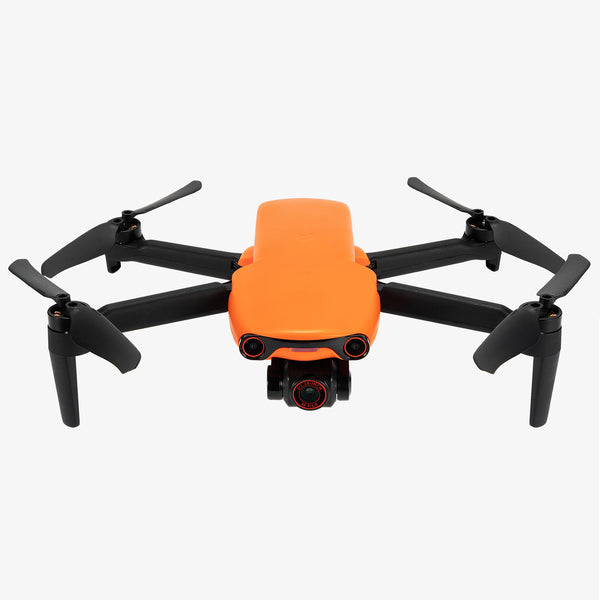In the Mini drone market, most flying enthusiasts just want to experience the fun of flying. The distinctive feature of the mini drone is that the drone is less than 250g, and the mini drone is small and portable and can be carried around. In this article we will compare the Hubasan Zino Mini Pro and Autel EVO Nano+ to see what makes them stand out among mini drones.
Hubasan Zino Mini Pro vs Autel EVO Nano+: Specs Comparison
| PARAMETERS | Hubasan Zino Mini Pro | Autel EVO Nano Plus |
| Size | 202.54×161.2×61.6mm | 140×90×50mm |
| Weight | 249 grams | 249 grams |
| Gimbal | 3-axis | 3-axis |
| Sensor | 1/1.3″ | 1/1.28″ |
| Megapixels | 48MP | 50MP |
| Aperture | f/1.85 | f/1.9 |
| Max video resolution | 4K@30fps | 4K@30fps |
| Bitrate | 90mbps | 100mbps |
| Photos mode | JPEG | DNG + JPG |
| HDR | YES | YES |
| Digital Zoom | No | 16x |
| Live view quality ( 1km > ) | Up to 1080p | Up to 2.7k |
| Range | 10km | 10km |
| Wind resistance | Level 5 | Level 5 |
| Max speed | 22.3mph | 29mph |
| Flight modes | No | Rocket, Fade Away, Orbit, Flick |
| Obstacle avoidance | Yes, Back/Front/Below | Yes, Back/Front/Below |
| Battery Life | 40 minutes | 28 minutes |
| FAA registration | Not required | Not required |
In the mini drone series, drones below 250g are not only exempt from registration in the United States, but are also favored by drone consumers because of their foldable convenience. The advanced mini-drone will also have professional cameras for photographers, filmmakers and YouTubers.
We'll expand on some of the features of the Hubasan Zino Mini Pro and Autel EVO Nano+ below this article, while preparing the table below for an overview of the specifications.
Hubasan Zino Mini Pro vs Autel EVO Nano+: Camera Comparison
A drone with a camera is the reason many drone enthusiasts buy a drone. For drone users, while experiencing the fun of flying, they can also experience the wonder of aerial photography.
The Autel Evo Nano+ is equipped with a better camera than the Hubasan Zino Mini Pro. For professional drone photographers, the Autel Evo Nano+'s 4k lens is an important factor.

Evo Nano Plus is equipped with a 1/1.28-inch sensor, a large aperture of f/1.9, and supports up to 4k/30fps video and 50MP photos with a photo resolution of 8192x6144. Support a variety of shooting formats and photo storage formats, the maximum digital zoom 16x. At the same time, Evo Nano Plus is also equipped with RYYB filter, which can capture more and richer color details of photos.
Zino Mini Pro is equipped with 1/1.3" CMOS sensor, f/1.85 large aperture, supports up to 4k/30fps video, and photo resolution is 8000 x 6000. The camera of Zino Mini Pro only supports JPEG format and has no zoom range.
Both drones are equipped with a three-axis gimbal to stabilize the footage. The three-axis gimbal has a considerable effect on the drone's flight stability and shooting. It is an amazing technology for a mini drone to be equipped with a three-axis gimbal.
Hubasan Zino Mini Pro vs Autel EVO Nano+: Design Comparison
Both drones are well made and beautiful. They are also easy to fly and control due to their light weight.

The Hubasan Zino Mini Pro is currently only available in grey, and the Autel EVO Nano+ is available in 4 colours. As a foldable drone, the propeller arm of Hubasan Zino Mini Pro is 202.54×161.2×61.6mm when unfolded and 137×88×61.6mm when folded. The Autel EVO Nano+ propeller arm is 140×90×50mm when folded and 264×310×50mm when unfolded.
The controller of Hubasan Zino Mini Pro has a built-in display screen. The controller has a general touch and is a little stiff. It can support long-distance transmission of 10 kilometers. The image transmission quality is 1080p/30fps, and the image transmission rate is 20Mbps.
The Autel EVO Nano+'s remote is comfortable to hold and moderately heavy, a bit like a game controller. It can support 10 kilometers long-distance transmission, the image transmission quality is 2.7k/30fps and 1080p/30fps, and the image transmission code rate is 90Mbps.
Hubasan Zino Mini Pro vs Autel EVO Nano+: Flight Performance and Features

Both Autel Evo Nano+ and Hubasan Zino Mini Pro are equipped with 3 flight modes with different speeds in different flight modes.
Both drones support level 5 wind resistance at the same time. The Autel Evo Nano+ has a maximum horizontal flight speed of 13m/s and a maximum ascent speed of 5m/s. The Hubasan Zino Mini Pro has a maximum horizontal flight speed of 10m/s and a maximum ascent speed of 3m/s.
Both drones have super long battery life, with the Autel Evo Nano+ supporting 28 minutes of flight and the Hubasan Zino Mini Pro supporting 40 minutes of flight.
Hubasan Zino Mini Pro vs Autel EVO Nano+: Premium Features

Both drones are equipped with three-way obstacle avoidance, making them good options for beginner drone pilots. In the world of mini drones, one of the reasons why the Autel EVO Nano+ is due to the DJI Mini 2 is that it is equipped with an obstacle avoidance system.
The advanced mini drone Autel EVO Nano+ also has a fast shooting function, a variety of photo shooting (single shooting, continuous shooting, panorama, time-lapse), return to home function, follow me function. The Autel EVO Nano+ has four automatic shooting modes (Rocket、Fade Away、Orbit and Flick) available in the Autel Sky App, and drone beginners can also get master shots. At the same time, it supports video editing and soundtracking in Autel Sky App, which can be uploaded to mainstream media platforms with one click.
Judgment

As you can see, the Autel Evo Nano+ beats the Hubasan Zino Mini Pro, which I personally think is probably the most advanced 250g drone on the market right now.
When drone beginners choose entry-level drones, they need to consider the camera performance and flight performance of the drone. Among the mini drone series, DJI Mini2, DJI Mini3 Pro, Autel Evo Nano Plus, and Hubasan Zino Mini Pro stand out.
Check out more related articles:
Battle of the Thousand Dollar Drones: Autel EVO Nano Plus vs DJI Mini 3 Pro vs DJI Mini 2








